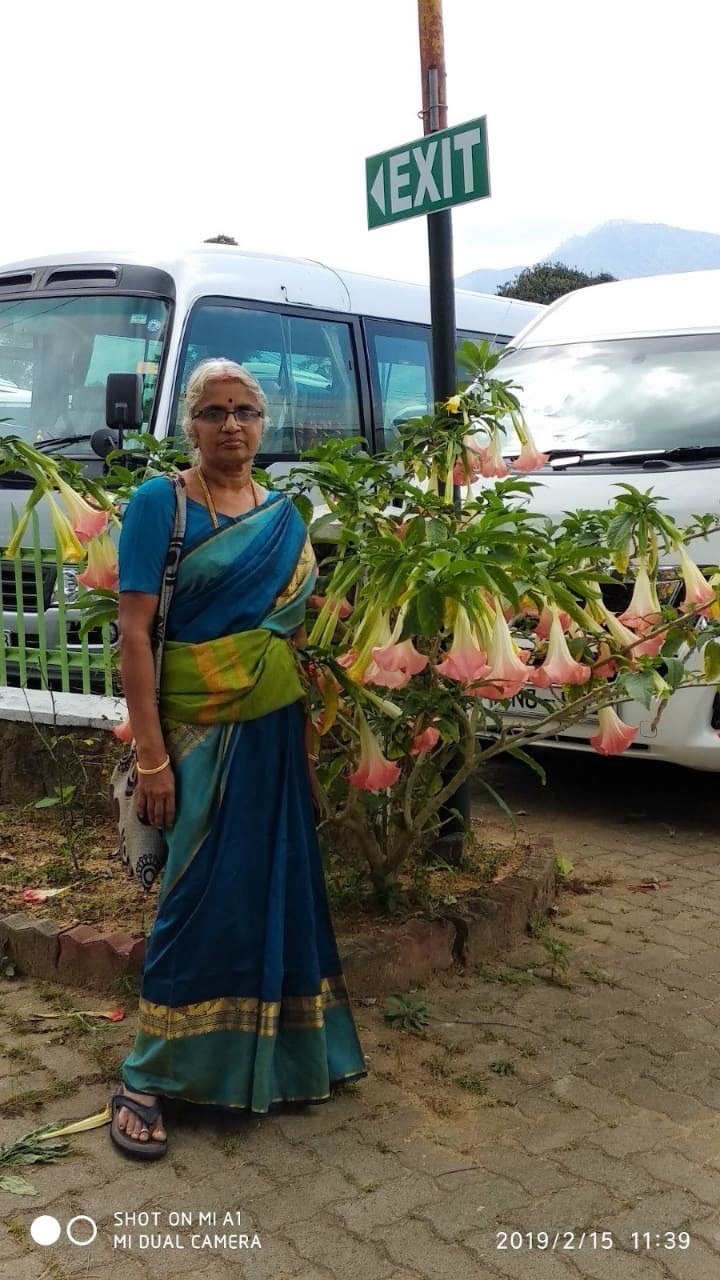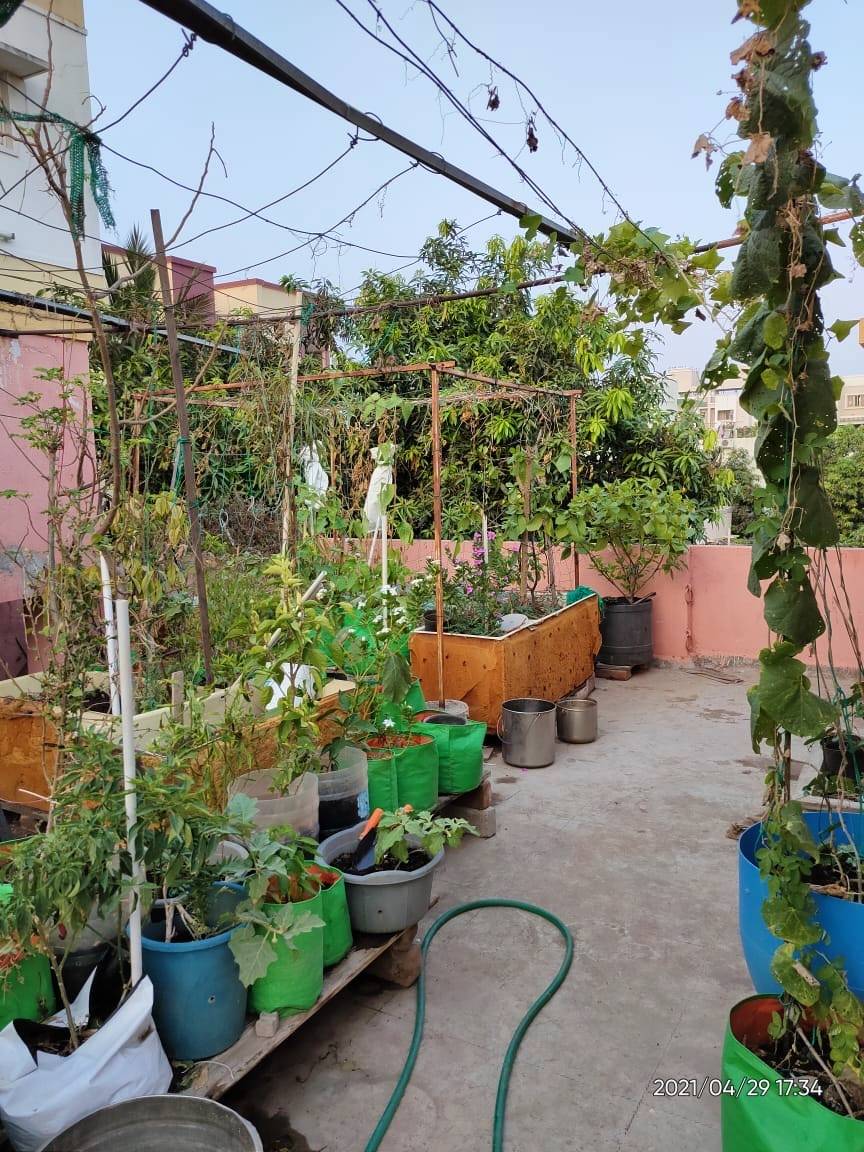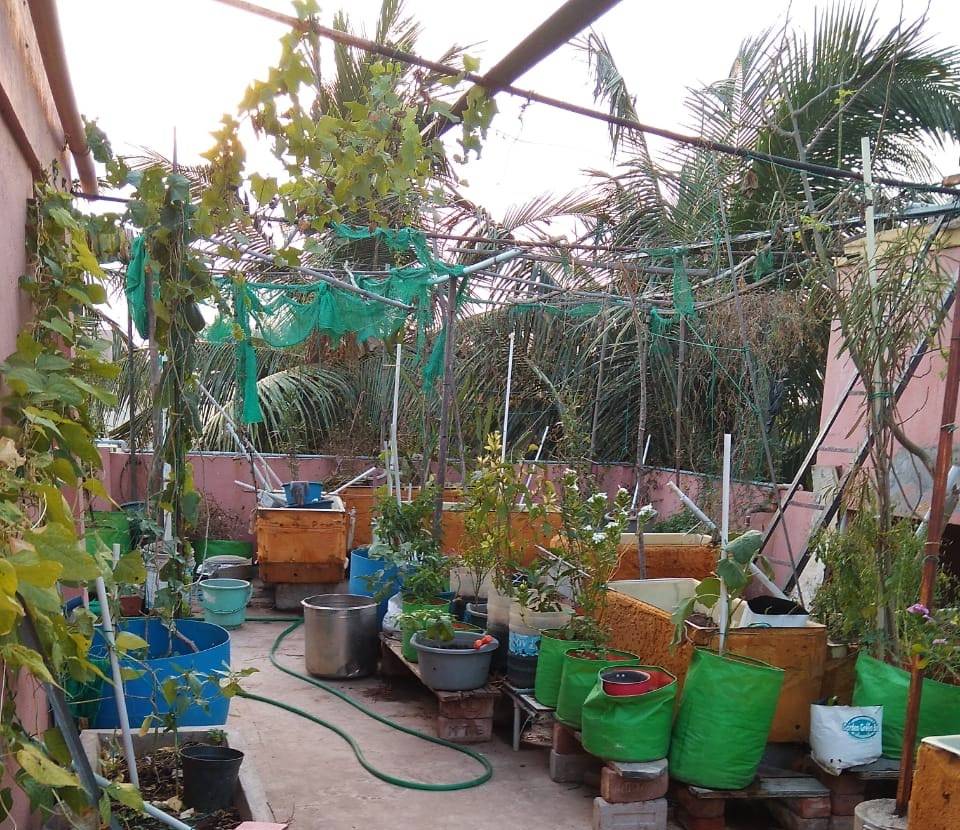“I decided to grow a few varieties of spinach on my terrace,” begins Jayanti Vaidyanathan, a resident of Chennai, who was diagnosed with a Vitamin D deficiency in 2013. “Apart from the medicines prescribed for me, I wanted to increase my intake of heirloom varieties of spinach which are packed with nutrients.”
What she needed was half an hour of sunlight daily, and her garden of fresh veggies on the roof was just what the doctor ordered.

She started by planting two varieties of spinach — mulai keerai and pasalai keerai in grow bags that she purchased from a nursery. Within a few weeks, she started harvesting the leaves and consuming them fresh. The 65-year-old’s success with just two varieties of spinach encouraged her to try her hand at growing more native varieties of vegetables, fruits, flowering plants and medicinal plants.
Today, her home in Medavakkam, Chennai has over 250 plants, which include 20 varieties of vegetables and 6 varieties of native spinach, 10 varieties of hibiscuses, and more. In an interview with The Better India, Jayanti shares how she maintains a lush terrace garden amidst a concrete jungle.

Organic potting mixes & old refrigerators
A few weeks after Jayanti’s first harvest of spinach, she realised that they were not growing very healthily. This was because she used regular garden soil from her backyard as the potting mix.
“So, to learn more about organic potting mixes, I took a one-day workshop organised by an experienced terrace gardener in Chennai. Here, I learned about the use of dry leaves and cocopeat to make light-weight potting mixes,” says Jayanti.
She watched several Youtube videos, read blogs, and even spoke to fellow gardeners through WhatsApp groups before making the organic potting mix. She now adds a mix of dry leaves, manure, and kitchen waste for best results.
Jayanti filled the mix into terracotta pots and planted seeds of other native spinach varieties, which included mudakathan keerai and ponnanganni keerai.
“In the new organic potting mix, these varieties grew healthy, and till date, they continue to flourish. For the last seven years, we have been consuming different varieties of spinach every day and have not purchased any from the market,” says Jayanti.
In 2014, she purchased more grow bags to try her hand at growing vegetables and fruits.
“I started by growing tomatoes, chillies, okra and lemon. The seeds were procured through other gardeners I connected with through WhatsApp groups. They even offered me guidance on how to raise the saplings and plant it,” says Jayanti.


To grow plants that have deep roots like gourds, moringa and lemon trees Jayanti recycled old refrigerators and bathtubs to create grow beds. The old ones were purchased for Rs 100 from kabadiwalas. The fridges were modified by removing the doors and creating holes for water seepage.
“I have recycled 10 single-door refrigerators and bathtubs from kabadiwalas. I added one layer of dried leaves and then filled them with the organic potting mixes. I have grown cauliflower, cabbage, corn, sugarcane, and continue to grow trees like moringa and lemon in fridges,” says Jayanti, adding that she also grows root vegetables like carrots and radishes in recycled plastic water bottles.

Tips & tricks for homemade fertilizers and pesticides
Jayanti spends three hours every morning and evening tending to her garden. To enrich the soil, especially during the harsh summer months, Jayanti prepares various types of organic fertilizers using kitchen ingredients such as vegetable waste and leftover food. However, two years ago, she learned about the Waste Decomposer (WDC) solution innovated by the National Centre For Organic Farming (NCOF).
“Using the WDC solution, 2 kilos of jaggery, and 200 litres water, I prepare an organic fertilizer. Further, I add one part of this mix with five parts of water and feed it to all my plants as nutrition. During summer months, instead of watering them with normal water, I feed them fertilizers,” says Jayanti, who admits that her plants are like her children.
Apart from this, she also adds the WDC solution to decompose wet food waste.
“The wet waste is blended finely in the mixer and then allowed to decompose for a week. I add one part of the compost with five parts of water and add it as a fertilizer,” says Jayanti.
She adds that to ensure her produce does not get infected with any diseases, she soaks Sambar onions overnight and plants them in each of her pots.
“Owing to the pungent smell and other acids that are released from the onion, the pests are warded away. As a bonus, some onions produce sprouts and grow into plants,” says Jayanti, adding that she also plants garlic bulbs, in the same manner, to ward away pests.
Over the last seven years, Jayanti’s garden has not only spread warmth and positivity but also provided good health for her children and grandchildren. This gardener with a green thumb has experimented with growing sugarcane, corn, banana, dragon fruit, cauliflower, cabbage and several other plants as well.
Edited by Yoshita Rao
No comments:
Post a Comment